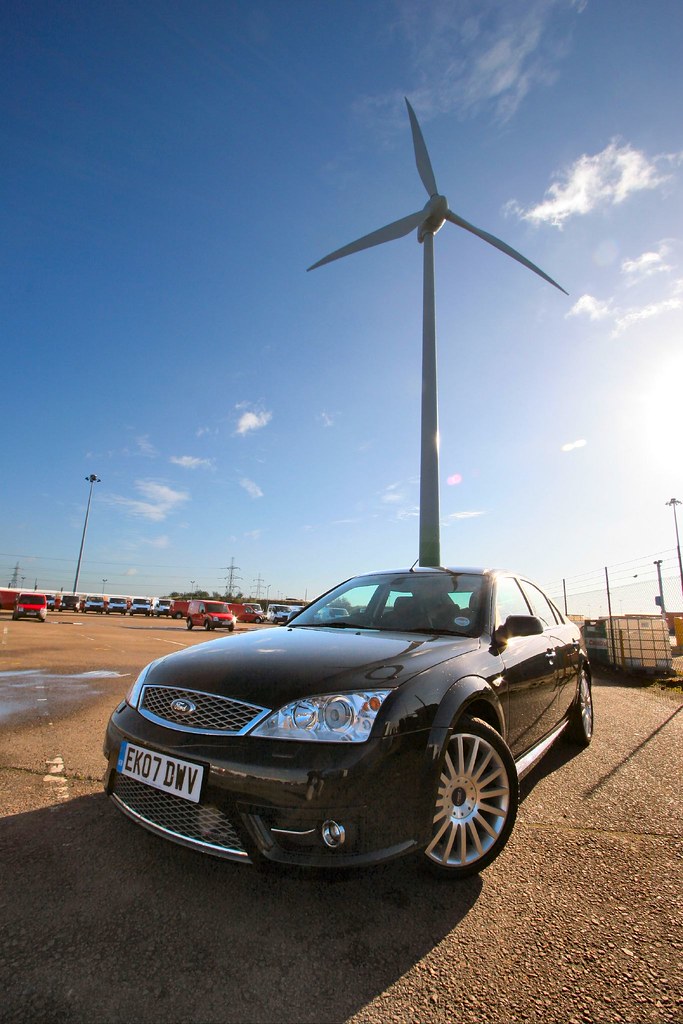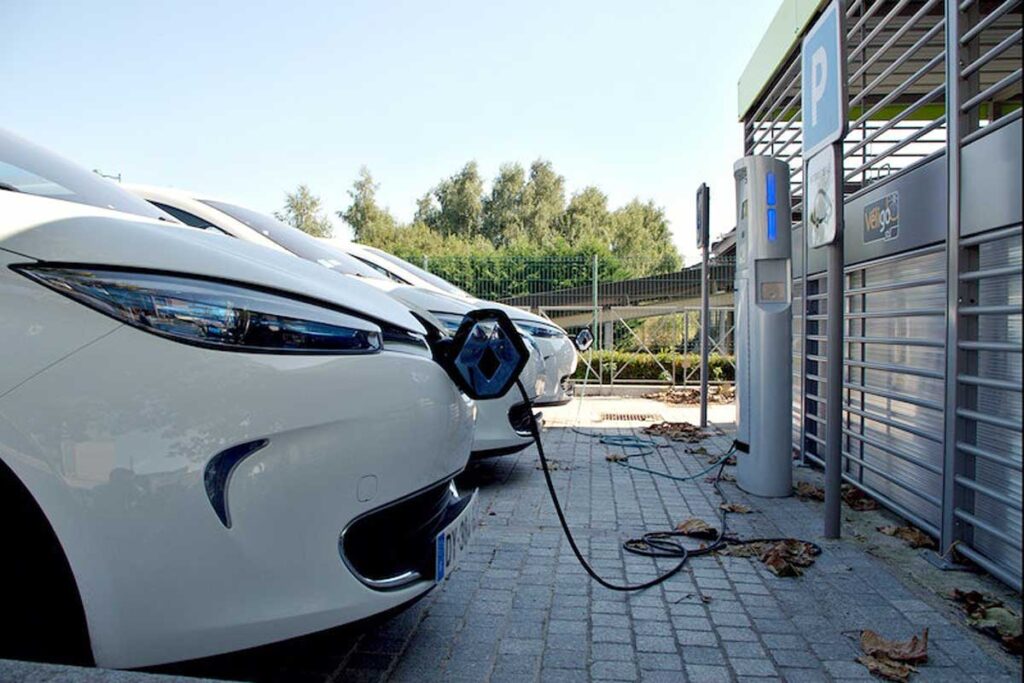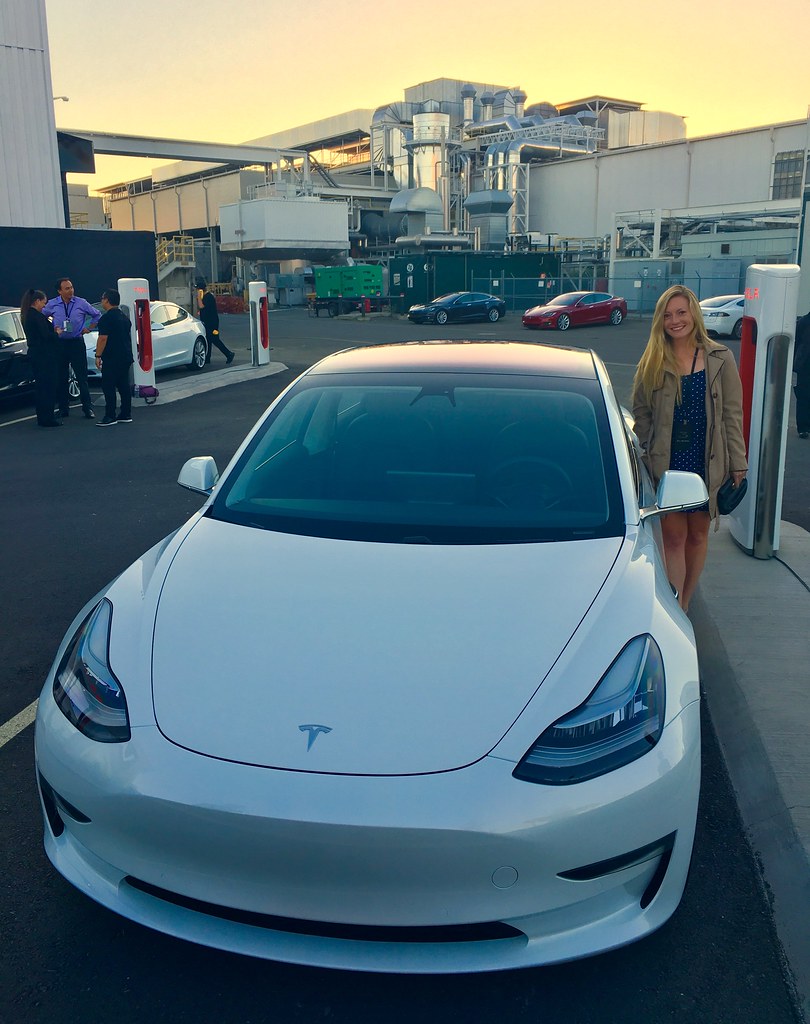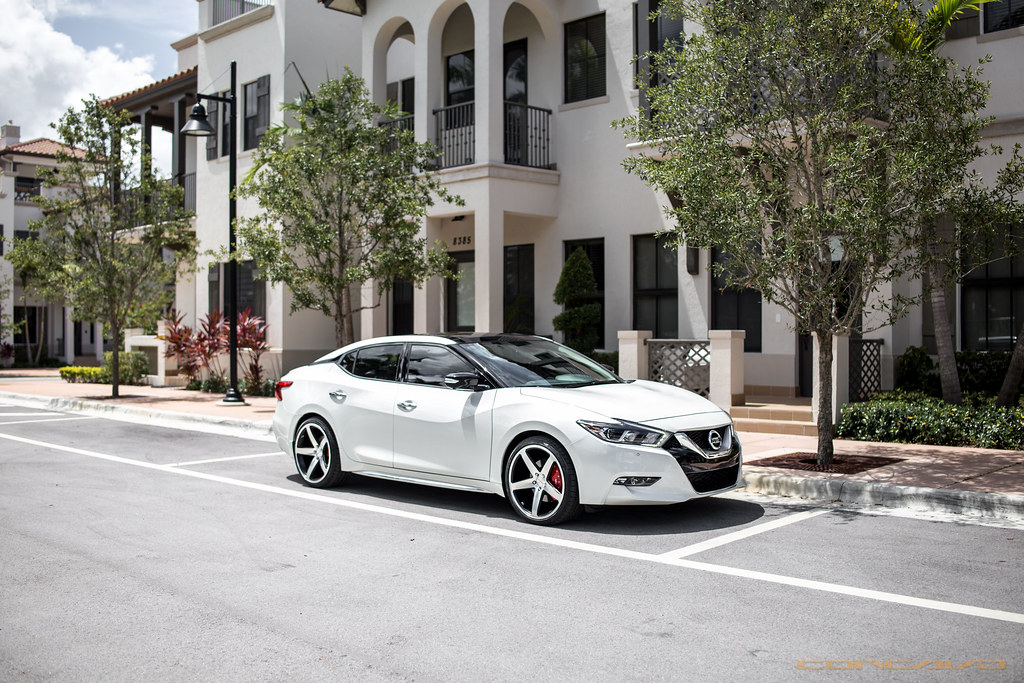
For many prospective electric vehicle (EV) buyers, a cloud of concern often hovers over one critical component: the battery. Images of rapidly degrading smartphone batteries or the daunting prospect of a prohibitively expensive replacement often fuel a significant anxiety, leading to questions like ‘How long will my battery truly last?’ and ‘Will I face a massive bill after just a few years?’ These worries have historically overshadowed other considerations, at times even surpassing concerns about range and charging infrastructure.
Indeed, recent studies by professional services company EY indicate a significant shift in buyer concerns, with expensive battery replacements now topping the list of worries for 26 percent of U.S. car buyers. This fear now outranks range anxiety (24 percent) and the perceived lack of charging stations (23 percent), marking a notable change in the EV adoption landscape. This context makes it understandable why so many drivers are hesitant to make the switch, fearing that their investment in an EV might sour prematurely due to battery degradation.
However, a wealth of new research and real-world data is emerging to challenge these long-held fears, presenting a far more optimistic picture of EV battery longevity and reliability. Independent studies, particularly from fleet telematics company Geotab, reveal that modern EV batteries are not only robust but are also significantly outlasting earlier expectations. It appears the time has come to put those battery worries to rest, as the data unequivocally shows that the lifespan and performance of today’s EV batteries are far more impressive than widely believed.

1. **The Myth of Rapid EV Battery Failure and Replacement Costs**The perception that EV batteries quickly fail and are excessively expensive to replace has become a dominant concern for many potential buyers. This anxiety, often stemming from personal experiences with smaller electronic devices like laptops and smartphones, projects a similar, rapid decline onto much larger and more complex automotive battery packs. The EY study explicitly highlights this, noting that battery replacement fears are on the rise, outranking traditional concerns like range and charging infrastructure for the first time.
This concern is understandable, as the thought of a major component costing thousands of dollars to replace can be a significant deterrent. However, the critical distinction between small consumer electronics and automotive-grade EV batteries is often overlooked. EV batteries are engineered with advanced chemistries, robust thermal management systems, and sophisticated software that collectively protect them from the kind of rapid degradation seen in everyday gadgets.
While EV batteries, like all batteries, do degrade over time, the rate and impact of this degradation are far less dramatic than often feared. The core issue isn’t whether they degrade, but *how much* and *how quickly*. The extensive data now available from numerous studies, covering millions of miles and cumulative years of operation, provides a clear and reassuring answer: the fears of rapid failure are largely unfounded, and the financial burden of replacement is often overstated and continually decreasing.
In fact, the failure rate for EV batteries built in the last 10 years is incredibly low, recorded at less than 0.5 percent. This figure alone should provide significant peace of mind to anyone concerned about a sudden, catastrophic battery failure. The narrative around EV battery longevity is shifting from one of apprehension to one of assurance, backed by robust, real-world performance data that paints a very different picture from the prevailing myth.
Read more about: Debunking the Three-Year Myth: 12 Crucial Insights into Enduring EV Battery Life and Performance

2. **Modern EV Batteries: Built to Last 20 Years or More**One of the most compelling pieces of evidence against common EV battery anxieties comes from Geotab, a fleet telematics company. Their comprehensive research, which involved studying nearly 5,000 fleet and privately owned EVs that collectively accumulated 1.5 million days on the road, offers profoundly positive news. This extensive dataset indicates that the average EV battery is robustly designed to last 20 years or more before it would typically require replacement.
This longevity significantly surpasses the average lifespan of many traditional internal combustion engine (ICE) vehicles and certainly puts to rest the notion of needing a replacement after just a few years. The calculation for ‘end of service life’ for a battery is usually when it reaches 70-80 percent of its original capacity due to a reduction in useful driving range. Geotab’s findings show that the best modern EVs may not reach this threshold until they are 20 years old, while the average EV should make it at least 11.1 years.
Such impressive durability means that for the vast majority of drivers, the battery in their brand-new EV, which is increasingly likely to be an SUV, truck, or van given market trends, will almost certainly last as long as they own the vehicle. This removes a significant financial and practical hurdle for new buyers, aligning the lifespan of the most expensive component with the typical ownership period of a car.
Even for those considering buying a used EV, this research provides considerable relief. Knowing that the battery is likely to last until the vehicle is at least 20 years old before needing to be replaced offers a new level of confidence in the used EV market. It transforms the prospect of EV ownership from a short-term gamble into a long-term, sustainable investment, allowing drivers to confidently enjoy the benefits of electric mobility without the constant worry of imminent battery failure.
Read more about: Unlocking the Mystery: The 13 Most Common Reasons Why Your Classic Car Battery Dies Prematurely

3. **Understanding Average Battery Degradation Rates (and why they’re improving)**The reality of EV battery degradation is far less concerning than many anticipate. Geotab’s extensive data reveals that the average EV battery studied degraded by just 1.8 percent per year. This figure represents a significant improvement from five years ago, when the average degradation rate stood at 2.3 percent per year. The best-performing EVs in the new study demonstrated even greater resilience, degrading at an impressive rate of just 1.0 percent per year.
To put this into perspective, battery degradation is a natural process where the battery permanently reduces its ability to store energy. An EV battery’s condition is referred to as its ‘state of health’ (SOH). For example, a 60 kWh battery operating at 90 percent SOH would effectively function as a 54 kWh battery. However, power degradation is rarely observable in EVs because their batteries can generally deliver more power than the powertrain components can handle, meaning the loss of stored energy is the primary practical impact.
Further reinforcing this positive outlook, a 5-year study tracking over 15,000 EVs, including models from Tesla, Nissan, Chevrolet, and Hyundai, revealed similar findings. On average, after one year, EVs retained 98 percent of their capacity; after three years, 92 percent; and after five years, 85 percent. Importantly, most degradation was observed to happen in the first two years, after which the rate slowed significantly, demonstrating a non-linear, more manageable decline rather than a constant, rapid fall.
Real-world surveys echo these findings. In the Which? Car survey 2024, involving over 3,595 EV owners, cars registered between 2017 and 2018 (around seven years old) showed an average range decrease of just 7 percent. This means a car with a new range of 180 miles would still offer approximately 167 miles. The data clearly indicates that most drivers will experience only a gradual loss of 10-15 percent of their range over a decade, which is substantially less than what early skeptics predicted, ensuring long-term practicality and value.

4. **The Critical Role of Battery Chemistry and Thermal Management**The significant discrepancy in expected battery lifespan—ranging from an average of 11.1 years to 20 years or more for the best modern EVs—can largely be attributed to two crucial factors: the exact chemistry used in the battery and the effectiveness of a car’s thermal management system. Different car companies employ slightly varying battery chemistries, such as NMC (Nickel Manganese Cobalt) or LFP (Lithium Iron Phosphate), each with its own characteristics regarding durability and degradation resistance.
Equally vital is the vehicle’s ability to control battery temperature. Extreme heat and cold are detrimental to battery health, accelerating degradation. This is precisely why modern EVs are equipped with sophisticated onboard thermal management systems. These systems actively regulate the battery’s temperature, maintaining it within an optimal operating range to protect its chemistry and prolong its life, whether through heating in cold conditions or cooling in hot ones.
The impact of effective thermal management is starkly illustrated by comparative data. For instance, the 2015 Tesla Model S, which utilizes a liquid cooling system for its battery, showed an average degradation rate of 2.3 percent. In contrast, the 2015 Nissan Leaf, an early model that relied on passive air cooling, exhibited a much higher degradation rate of 4.2 percent. This clear difference underscores how robust thermal management systems, particularly liquid cooling, can significantly slow battery degradation.
Newer EVs tend to incorporate better battery chemistries and more advanced temperature control systems, which directly contributes to their enhanced longevity. The observed drop in the average degradation rate over the past five years is a testament to these continuous advancements in battery technology and engineering. When considering an EV, understanding the type of thermal management system and battery chemistry used can offer valuable insight into its expected long-term performance and durability.
Read more about: Insider Tip-Off: A Deep Dive into 12 Electric Vehicles and Their Alleged Winter Range Drop

5. **How EV Battery Life Compares to Average Vehicle Ownership**When evaluating the practical implications of EV battery longevity, it’s crucial to compare it against the typical duration of vehicle ownership. According to analytics firm S&P Global, the average age of a vehicle in the U.S. today stands at 12.6 years. For ‘light trucks’—a broad category encompassing nearly all SUVs, as well as pickup trucks—this average is 11.9 years. This figure has risen over the past decade from just over 11 years, indicating that people are keeping their vehicles longer.
This data point is highly significant for prospective EV owners. When Geotab’s research suggests that the average EV battery should last at least 11.1 years, and the best modern EVs for 20 years or more, it means that the battery’s lifespan is either on par with or significantly exceeds the average period of vehicle ownership. Essentially, the average person is likely to replace their car around the same time it might potentially need a battery replacement anyway, if at all.
The relevance of this comparison is further amplified by current automotive sales trends. Cars now make up only 21 percent of all new vehicle sales in the U.S., a number that is rapidly declining, according to the Alliance for Automotive Innovation. The majority of new vehicles sold are SUVs, trucks, and vans, and most new EVs introduced to the market are also in these segments. This means the brand-new EV you are likely considering today is almost certainly going to be an SUV, truck, or van, and, more importantly, its battery is almost certain to last as long as you own the vehicle.
This alignment of battery lifespan with ownership duration effectively neutralizes one of the primary anxieties surrounding EV adoption. It ensures that the investment in an EV will provide reliable, uninterrupted service for the full extent of its useful life in your hands. Even those exploring the used EV market can take comfort, knowing that the battery is likely to remain functional well beyond the typical ownership period, potentially lasting until the vehicle is at least 20 years old before a replacement might even be considered.
Read more about: Unveiling the Elite’s Automotive Desires: A Data-Driven Look at What High-Net-Worth Individuals Seek in Luxury Vehicles

6. **The Real Cost of EV Battery Replacement (and why it’s dropping)**While the data strongly indicates that most EV batteries will outlast the vehicle’s ownership period, the question of replacement cost, should it ever arise, remains a concern for some. Research from EV battery monitoring company Recurrent provides a current perspective on these costs, showing that the average price of replacing an EV battery today ranges between $6,500 and $20,000, depending on the specific model and its capacity.
However, it is crucial to understand that this cost is not static; it has been on a consistent downward trajectory. Recurrent’s data reveals that the average cost of battery production, and consequently replacement, dropped by a substantial 16 percent between 2009 and 2019 alone. This trend is expected to continue as battery technology advances, manufacturing processes become more efficient, and economies of scale take hold, making future replacements even more affordable.
To provide a meaningful comparison, consider the cost of replacing a major powertrain component in a traditional gasoline-powered vehicle. JD Power estimates that an engine replacement in a gas car typically costs between $4,000 and $10,000. When viewed in this context, the cost of an EV battery replacement, especially considering its significantly longer lifespan and decreasing price, is not an outlier but rather falls within a comparable range for major vehicle component overhauls.
Furthermore, the market for used and remanufactured EV batteries is slowly but steadily expanding. These options, which are becoming more common, offer even more cost-effective solutions for owners whose batteries might need replacement outside of warranty. This growing ecosystem of repair and replacement choices further mitigates the financial risk associated with EV battery longevity, assuring consumers that potential future costs are both manageable and diminishing.

7. **Optimizing Your EV Charging Habits for Maximum Battery Life**Understanding effective charging strategies is paramount for extending your EV battery’s lifespan. While electric vehicle batteries are engineered for durability, certain charging habits can either hasten or slow degradation. The critical distinction often lies in choosing between the speed of DC Fast Charging (DCFC) and the battery-friendly nature of slower Level 2 charging.
DCFC, designed for quick top-ups on long trips, delivers substantial electricity rapidly, generating significant heat. This heat is a primary accelerator of battery wear. Automakers themselves advise limiting frequent DCFC use, reserving it primarily for road trips or unforeseen stops to prevent premature battery aging. For daily use, prioritizing Level 2 charging, whether at home, work, or public stations, is far more beneficial. This slower charging method minimizes heat stress, preserving the battery’s chemical integrity and extending its life without impacting routine commutes.
Furthermore, managing your battery’s “state of charge” (SOC) is vital. Constantly charging to 100% or frequently draining to near 0% induces stress on lithium-ion batteries. Experts recommend maintaining a daily charge between 20% and 80%. Manufacturers often incorporate internal “buffers” to shield batteries from these extremes, but owners can further enhance longevity by setting custom charge limits. Reserving a full 100% charge only for occasions requiring maximum range, such as long journeys, helps significantly in maintaining optimal battery health over time.
Read more about: Unlocked: The EV Expert’s 10 Essential Strategies to Maximize Your Electric Vehicle’s Range Effortlessly

8. **Mastering Thermal Management: Protecting Your EV Battery from Extremes**Maintaining an optimal temperature is crucial for EV battery health, as extreme heat and cold accelerate degradation and reduce energy storage capacity. This underscores the critical role of a vehicle’s thermal management system in ensuring battery longevity and performance. It acts as a constant protector for your valuable EV investment.
The effectiveness of thermal management is clearly demonstrated by real-world data. For example, a 2015 Tesla Model S with a liquid cooling system showed an average degradation rate of 2.3 percent. In stark contrast, an earlier 2015 Nissan Leaf, relying on passive air cooling, exhibited a significantly higher degradation rate of 4.2 percent. This nearly twofold difference highlights how robust temperature control systems, particularly liquid cooling, substantially slow the aging process of an EV battery.
Modern EVs increasingly integrate sophisticated thermal management that actively regulates battery temperature, heating or cooling as needed. Owners can supplement this by parking in the shade or a garage in hot climates, reducing direct sun exposure. Some EVs also offer pre-heating options for cold weather. These combined efforts—advanced vehicle technology and simple owner habits—form a strong defense against temperature-induced battery wear.

9. **The Hidden Factors: Software Updates, Mileage, and Chemistry in Battery Longevity**Beyond charging and temperature, several other factors significantly influence an EV battery’s lifespan, including continuous advancements in battery chemistry, the surprising impact—or lack thereof—of vehicle mileage, and the vital role of software updates. These elements collectively explain the remarkable resilience of modern EV batteries.
One reassuring finding, supported by extensive research from Geotab, debunks a common myth: high mileage does not necessarily accelerate battery degradation. Data shows “high-use electric vehicles do not experience significantly greater battery degradation than lower-use vehicles.” This confirms that “Time matters more than miles for battery health,” empowering drivers to fully utilize their EVs without concern that extensive driving will prematurely age the battery.
Crucially, an EV’s Battery Management System (BMS) continuously improves through over-the-air (OTA) software updates. These updates optimize charging algorithms, refine thermal control, and adjust battery “buffers” to enhance longevity. A notable example is a Tesla 2019 update that reportedly reduced degradation rates by 5% in some cases. Regularly updating your EV’s software is a straightforward yet powerful way to ensure your battery benefits from the latest protective technologies and optimizations.

10. **Navigating EV Battery Warranties: Your Shield Against Unexpected Costs**Understanding the battery warranty is crucial for any EV owner, as it safeguards against premature degradation or failure of the vehicle’s most expensive single component. A robust warranty provides significant peace of mind, assuring protection for your investment over the long term.
Most EV manufacturers offer substantial high-voltage battery warranty coverage, typically for “seven or eight years (or around 100,000 miles, whichever comes sooner).” These warranties often include a “70% capacity guarantee,” meaning if the battery’s health drops below 70% within the covered period, the manufacturer will repair or replace it at no cost. For instance, Tesla, Hyundai, and Kia commonly provide 8 years/100,000+ miles with this 70% guarantee.
When considering a used EV, meticulous attention to its battery warranty is even more vital. While warranties generally transfer, it’s essential to verify “whether the current or previous owner has done anything to the car that could invalidate that warranty,” such as unauthorized modifications or neglected service. Ensuring the warranty remains valid provides continued financial protection, reinforcing the long-term value of your used EV.
Read more about: Navigating the 2025 Car Warranty Changes: A Consumer Reports Guide to Protecting Your Used Car Investment

11. **Beyond the Main Pack: Understanding All Your EV Batteries and Monitoring Tools**While the high-voltage battery powers the EV’s drivetrain, comprehensive EV maintenance involves understanding all its power sources and available monitoring tools. An electric vehicle actually houses two distinct batteries, and neglecting one can subtly impact the seamless operation of the entire system.
In addition to the primary high-voltage battery, every EV includes a conventional “12-volt battery,” similar to those in gasoline cars. This smaller battery is indispensable for powering auxiliary systems like lights, infotainment, and vehicle controls. It ensures low-voltage electronics function, even when the main system is off. While the high-voltage battery needs less predictive maintenance, the 12-volt unit “should still be regularly checked, as it can wear out over time” and may require earlier replacement.
To proactively manage battery health, owners and fleet managers have access to sophisticated diagnostic tools. “Telematics data is crucial for understanding the health of your fleet’s EV batteries,” providing real-time insights into capacity, degradation rates, and overall state of health (SOH). Tools like the Geotab EV Battery Degradation Tool help compare models and inform data-driven decisions. Such monitoring empowers users to take corrective actions, maximizing efficiency and extending vehicle life.

12. **The Evolving Landscape of EV Battery Lifecycles: Replacement, Recycling, and Value**Despite evidence of extended longevity, concerns about what happens when an EV battery eventually reaches its “end of service life” are understandable. When a battery “dies,” it can no longer efficiently power the vehicle, necessitating replacement or repurposing. However, the future of battery lifecycle management is rapidly evolving towards more sustainable and affordable solutions.
The perceived high cost of battery replacement is significantly decreasing. While current averages “range between $6,500 and $20,000,” this figure is consistently falling. The “average cost of battery production… dropped by a substantial 16 percent between 2009 and 2019 alone,” a trend projected to continue due to technological advancements and economies of scale. Compared to a major gasoline engine replacement, EV battery costs are now largely comparable, often with a much longer operational period before such an expense is incurred.
Crucially, the ecosystem for post-first-life EV battery management is rapidly expanding. “The market for used and remanufactured EV batteries is slowly but steadily expanding,” offering more cost-effective and environmentally conscious alternatives to new replacements. Additionally, many manufacturers actively participate in “recycling programs to help safely dispose of or repurpose the dead battery,” reducing environmental impact and recovering valuable materials for future use. This holistic approach ensures a responsible and economically sound lifecycle for EV batteries.
With such clear, data-backed insights, it’s evident that the era of range anxiety and battery replacement fears should be firmly behind us. Modern electric vehicles, bolstered by continuous technological advancements, sophisticated management systems, and comprehensive warranty coverage, are truly built for the long haul. Drivers can embrace EV ownership with confidence, focusing on the impressive performance, environmental benefits, and long-term savings, knowing their battery will reliably power their journeys for years, if not decades, to come. The road ahead for electric mobility is not just greener, but also undeniably more secure and predictable than ever before.



